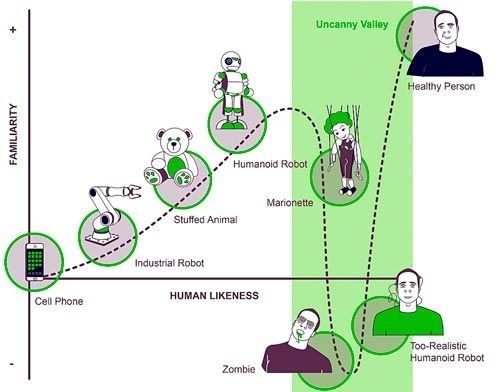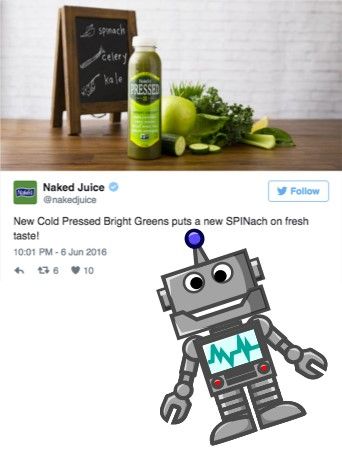The Uncanny Valley and Social Media Marketing
You may have heard of a concept known as the “uncanny valley.” It is often associated with the fields of robotics or design. For the unfamiliar, the uncanny valley is the name given to a phenomenon regarding human reactions to things, especially technology, that attempt to imitate human beings. The closer a robot - or whatever else - comes to imitating a human being without successfully doing so, the more unnerving it becomes.

I believe that this concept can also be applied to a business’s approach to social media strategy and interaction with their customers. I realize that might sound a little wild, but hear me out.
If you have ever tried to contact a company’s customer service, either through email or social media platforms, there is a high likelihood that you have, at some point, received a reply that was obviously an automated response with your name and perhaps a few pertinent details pasted into it. This is off-putting and tends to give the impression that your case is not seen as important or that it has even been truly acknowledged. While these canned responses might use slang and a warm, casual tone to sound “human”, you know better. Similarly, nothing compares to the frustration of navigating a customer service phone line operated entirely by a pleasantly voiced female robot who sounds almost human, but isn’t quite human enough to give you the help you need. The reaction to these experiences is almost universally annoyance and it often reflects negatively on a customer’s perception of a company.
This concept can be readily applied to a company’s use of social media. Ana Gotter of AgoraPulse excellently sums it up: “Users want to be able to read your content and believe two things: 1) It was written by an actual person, and not a bot or some sort of automated curation tool. 2) That, to an extent, your intentions are transparent.”
People tend to be very acutely attuned to the “sentience” of a social media account and if it is being managed by an algorithm (or if it is so formal, boring, or formulaic that it could be perceived that way), they will be very unlikely to interact with it. Why bother talking to something that isn’t really “hearing” you? And after all, social media is about talking with people, not talking at them. Social media is a place where you can engage in genuine, real-time dialogue with consumers, learn from them, and show them sides of your company that they might otherwise never see. If a brand’s social media presence does nothing but rehash information that consumers could find on their website with the occasional pun added, it is not adding much interest to your brand. Showing a little humor, engaging in actual conversations (even, or perhaps especially, ones unrelated to marketing), and using social media as a platform to genuinely humanize your company and your brand can go a long, long way. Make jokes! Ask questions! Reply to people like a person would! Use it to let people meet your employees! Show them the process you use to make your product!


There is something off-putting about social media posts which make an attempt to sound relatable or hip, but don’t quite pull it off successfully. At best, it can come off sounding like a shallow attempt at connecting to the younger audience. At worst, it can sound like an alien or a robot trying to impersonate a human. Either way, people aren’t likely to resonate with the message because it does not sound genuine.
As Jackie Johnston of Entrepreneur.com says, “The beauty of social media is that it allows for a two-way conversation and it can be the fast track to real relationships with an audience if done right. But to build real, genuine connections, those doing the sharing must be human.”
The main take away from this is to be careful not to fall into the “uncanny valley” when choosing a social media voice. While this approach is not suitable for every brand, if your brand is choosing to opt for a more human or casual voice on social media platforms, go all the way and do it genuinely. While every post should be thoughtful, not every post has to be super polished and not every post should sound like a marketing pitch. Your media voice should be that of a person, not an android programmed to advertise.
To get our latest articles when they are posted, please subscribe by e-mail or RSS.
